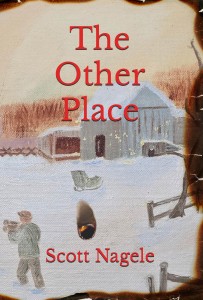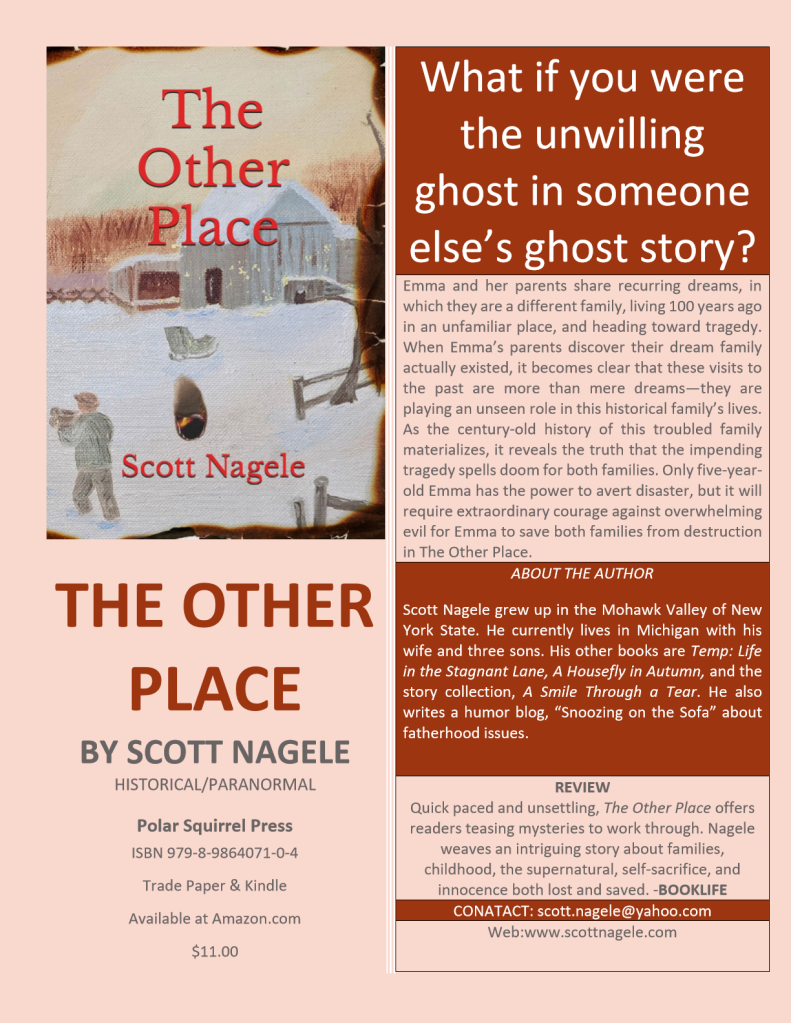It’s been two months since I ran the free ebook promotion I detailed in my last post. To summarize, I gave away about 3,400 Kindle copies of my latest book, The Other Place.
I had hoped that 1% of the people who downloaded the free copy would leave a review on Amazon.
Did I get those 34 reviews?
No. Not yet anyway.
I’ve received one review since the giveaway.
I did get about 15 ratings, but those are less useful than text reviews.
So I’ve been thinking about my lack of reviews. Is 1% too high a target? There was a time, I think, when 1% was a reasonable expectation, but I now believe that time is gone.
I can download 6 free books a day, but I can’t read 6 books a day.
When I purchased the Freebooksy promotion, I joined the email list that goes out to subscribers. An email appeared in my inbox every day with an average of six free ebooks featured per email (and this is just from one organization).
Personally, I don’t like clutter, real or virtual, so I am not inspired to download a book I’m unlikely to read, even if it is free. Not that there’s anything wrong with it, but I know there are lots of folks who will take free stuff on the chance it may someday be used.
I think it’s also human nature to be more careful to use something you paid for as opposed to something you grabbed on impulse because it was free.
In the days when free ebooks were less plentiful, a 1% review rate was probably reasonable. Now, free downloads come fast and furious, and it’s impossible for most readers to keep up with reading all, or perhaps even a fraction, of what they have collected for free.
Ratings make feedback quick and easy (and less meaningful)
Once upon a time, the only way for readers to submit feedback for books sold on Amazon was to leave a review. Now users can leave a star rating without a text review. This may lead to more ratings from readers who haven’t the time or disposition to write a review, but I think it also leads to fewer reviews now that one click is enough to register one’s opinion.
We must be mindful that Amazon reviews do not exist for authors. They are there as a guide to future customers. Authors are definitely more obsessed with them than customers are, but that doesn’t change their purpose.
Still, an author cannot help being disappointed at not having a more useful guide in place for potential customers. As a customer, I know that ratings are less meaningful information than reviews are.
Who is to blame?
Who is at fault for this disappointment? Not Freebooksy. They helped me give away as many copies as I could expect and more. Not the readers who downloaded the free copies. Those copies are theirs now and they are free to do, or not do, with them as they wish. They don’t owe me a review, a rating, or anything else.
I guess that leaves me. My expectations were not properly calibrated for the time and place in which I am doing business.
But now they are. You live and learn.



 ia alternate between dismissing Emma’s dreams to fearing that she might be losing her grip on reality, echoing the thinking of Alex and Janet, Mary Ellen’s parents. That couple frequently beats Mary Ellen, as punishment for the fires, and The Gatekeeper urges her to take murderous revenge.
ia alternate between dismissing Emma’s dreams to fearing that she might be losing her grip on reality, echoing the thinking of Alex and Janet, Mary Ellen’s parents. That couple frequently beats Mary Ellen, as punishment for the fires, and The Gatekeeper urges her to take murderous revenge.